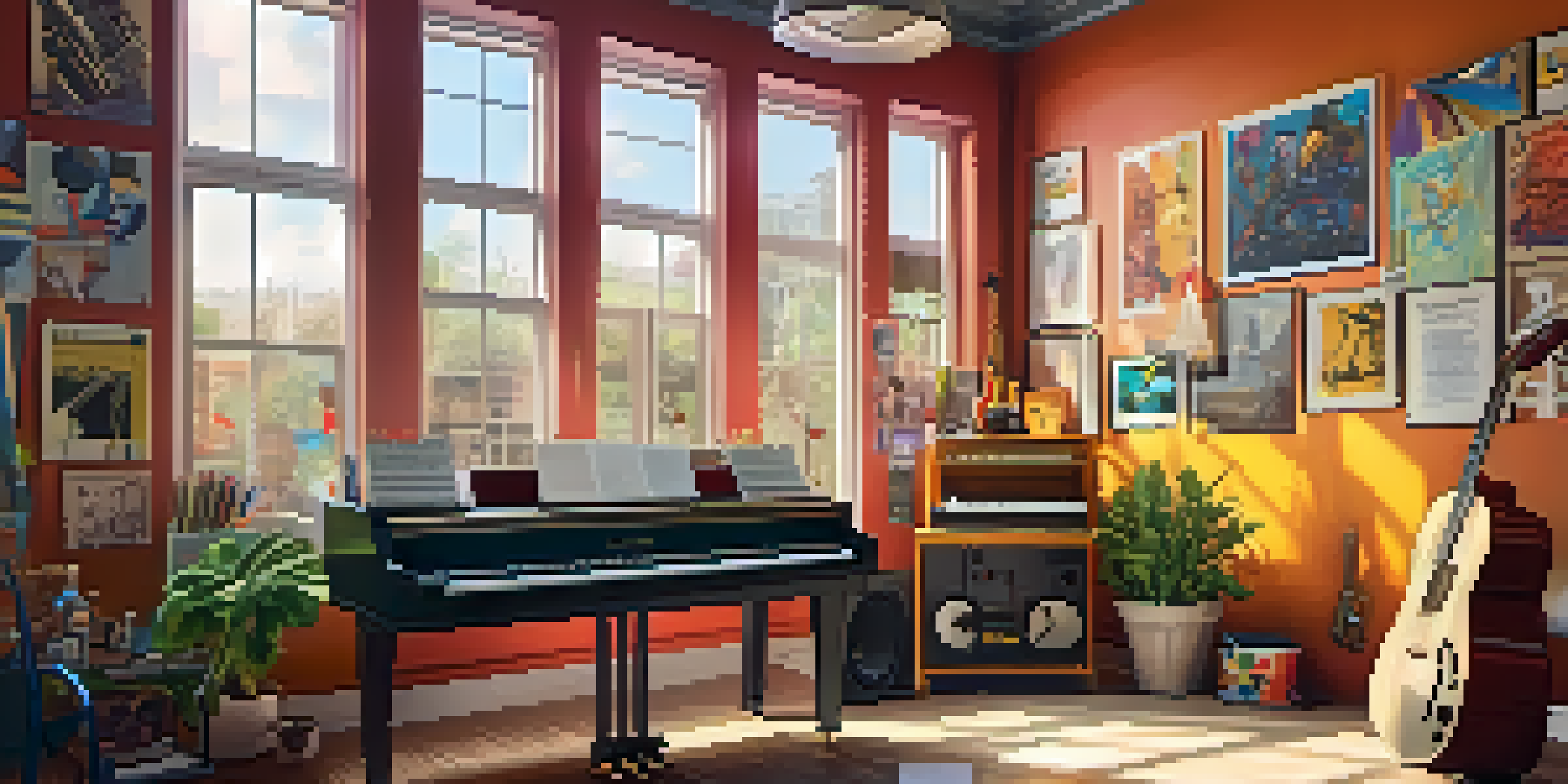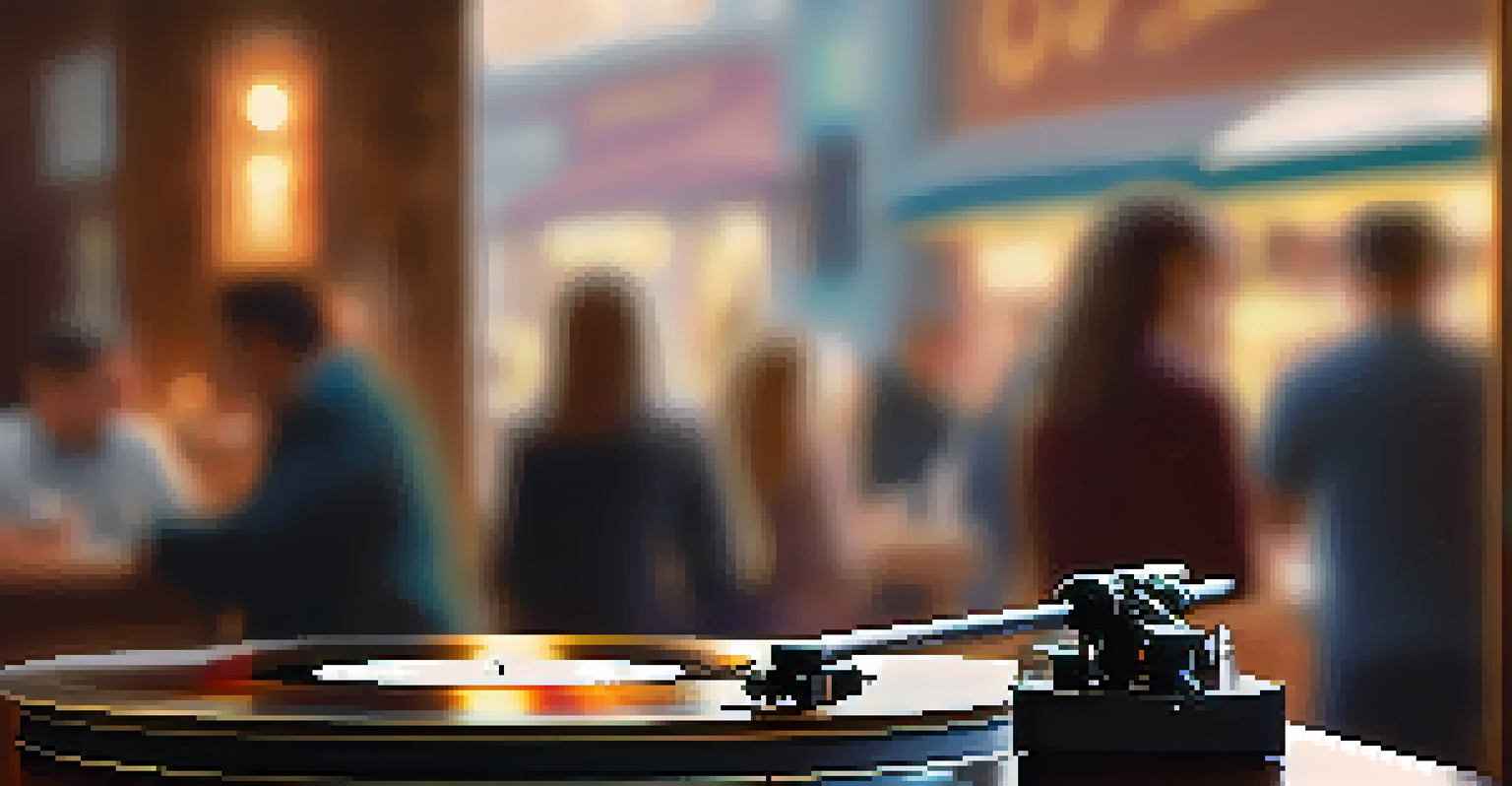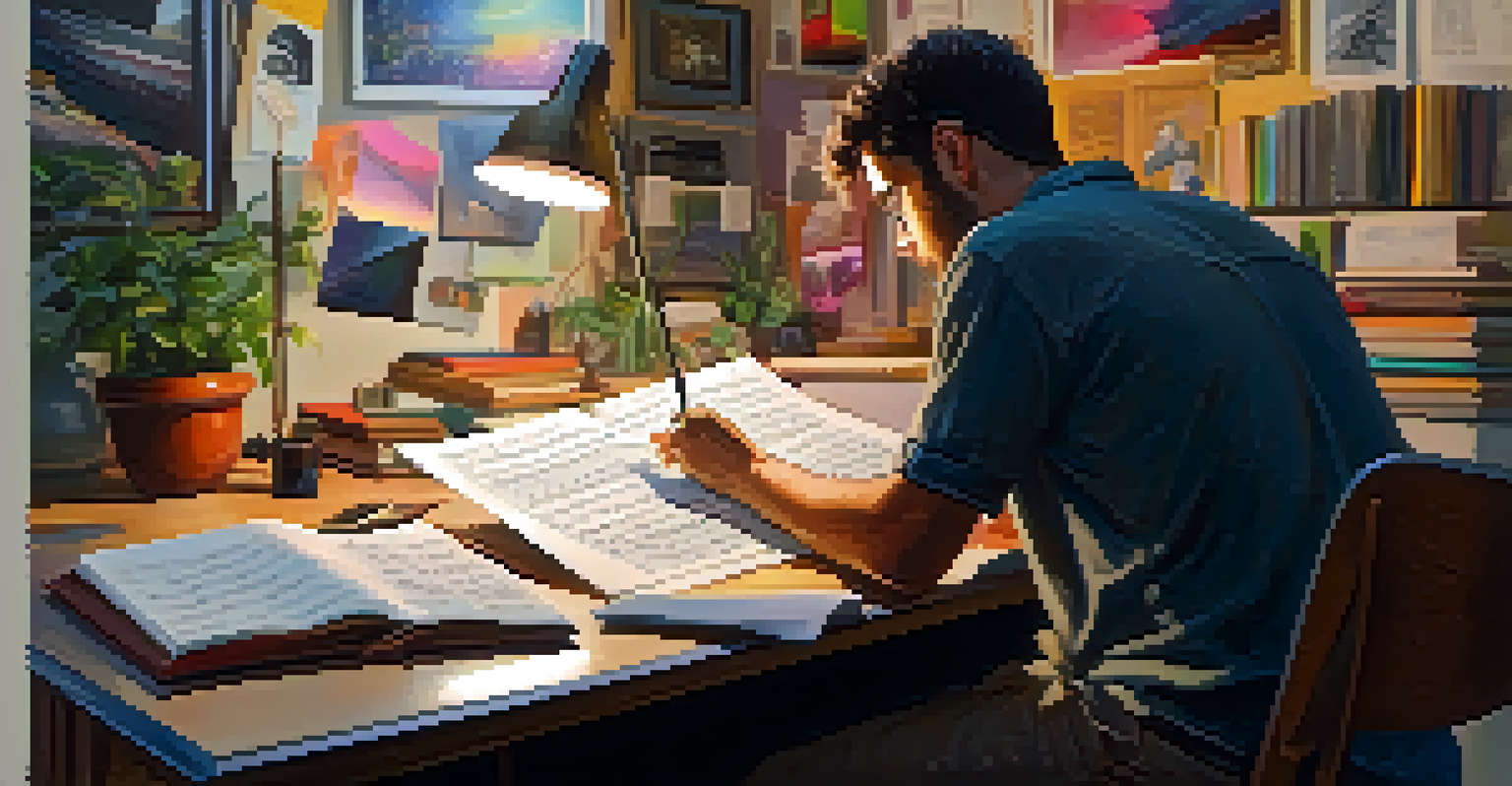How Streaming Services Influence Music Composition Trends

Streaming Services: The New Gatekeepers of Music
In the past, record labels held the keys to the music industry, dictating what artists could produce. Today, streaming services like Spotify and Apple Music have taken on that role, influencing not only what music is heard but also how it's composed. Artists now cater to algorithms that favor certain styles and song structures, creating a ripple effect on composition trends.
Music is the shorthand of emotion.
For instance, the popularity of shorter songs—often under three minutes—can be attributed to streaming metrics that reward quick listens. This has led to a shift in how musicians approach songwriting; many are now crafting hooks and choruses that grab attention almost immediately. This change exemplifies the way streaming platforms have reshaped the creative process itself.
Moreover, the need for songs that perform well on playlists has led to the rise of 'playlist-friendly' tracks. These compositions often feature catchy beats and familiar chord progressions, making them more likely to be included in popular playlists, thus reaching wider audiences.
Data-Driven Music Creation: The Role of Analytics
With the rise of streaming services, artists now have access to a treasure trove of data about their listeners. This data includes insights on demographics, listening habits, and even specific song performance. Musicians are increasingly using this information to tailor their compositions to what resonates with their audience, creating a more personalized listening experience.

For example, if a particular genre or style is trending among listeners, artists might experiment with those elements in their next project. This data-driven approach can lead to music that feels more relevant and timely, appealing directly to shifting tastes. It’s like having a direct line to your audience’s preferences, influencing the creative process.
Streaming Services Shape Music Creation
Streaming platforms influence artists to create music that caters to algorithms, affecting song length and structure.
However, this reliance on analytics can also be a double-edged sword. While it can enhance creativity, it might also stifle artistic risk-taking, as musicians may feel pressured to stick to proven formulas to maintain their streaming success.
The Influence of Playlists on Music Trends
Playlists have become the new radio stations, curating music for listeners and significantly impacting what becomes popular. Curators play a crucial role in this system, often selecting songs that align with current trends or emerging genres. As a result, artists are increasingly aiming to get featured on influential playlists, shaping their music around the sounds that dominate these collections.
The great thing about music is that it transcends language.
This has led to a phenomena where entire genres can rise or fall in popularity based on playlist placements. For instance, the surge in lo-fi beats and chill music can be traced back to playlists designed for studying or relaxation. Artists are now more inclined to create music that fits these specific moods and vibes, influencing their overall composition style.
Additionally, the global nature of streaming platforms means that artists can tap into international trends, blending diverse cultural influences into their music. This fusion not only enriches the soundscape but also reflects a more interconnected world of music composition.
Collaborations and Cross-Genre Blending
Streaming services have fostered an environment where collaboration is not just encouraged but often necessary for success. Artists from different genres are more willing to work together, leading to a rich tapestry of sounds that push the boundaries of traditional music. This trend of cross-genre collaborations has become a staple in modern music composition.
For instance, consider the popular partnership between hip-hop artists and pop singers, which has resulted in chart-topping hits. These collaborations often harness the strengths of each genre, creating a unique sound that appeals to a broader audience. This blending of styles encourages artists to experiment and innovate, leading to fresh compositions.
Playlists Drive Music Popularity
Curated playlists have become essential in determining which songs gain traction, leading artists to tailor their music for inclusion.
In essence, the collaborative spirit fostered by streaming platforms promotes a culture of creativity and exploration. Artists are inspired to step outside their comfort zones, resulting in compositions that are not only diverse but also reflective of the current musical landscape.
The Role of Social Media in Music Promotion
Social media platforms like TikTok and Instagram have become essential tools for music promotion, significantly influencing composition trends. These platforms allow artists to share snippets of their work, often leading to viral moments that can propel a song to stardom. Consequently, musicians are crafting songs with catchy hooks designed specifically for short-form videos.
For example, many songs that have gained popularity on TikTok feature memorable choruses that can easily fit into a 15 or 30-second clip. This has shifted the focus of music composition towards creating standout moments that can capture attention quickly, aligning with the fast-paced nature of social media.
As a result, artists are finding new ways to engage with their audience, using social media not just for promotion, but as a platform for inspiration. This interplay between social media and music composition is reshaping how songs are created and shared in the digital age.
The Impact of Algorithms on Music Discovery
Algorithms play a pivotal role in how music is discovered on streaming platforms, influencing both what listeners hear and how artists compose. These algorithms analyze user behavior to recommend songs, creating a feedback loop that can dictate trends. Artists often feel the pressure to create music that aligns with algorithmic preferences to ensure visibility.
This has led to a phenomenon where certain sound patterns and structures become more prevalent, as they are favored by algorithms. For example, songs with repetitive hooks or specific BPMs (beats per minute) may be prioritized in recommendations, shaping the music that artists produce. The result is a trend towards formulaic compositions, where creativity may take a backseat to algorithmic success.
Social Media Fuels Music Trends
Social media platforms like TikTok inspire artists to craft catchy hooks designed for viral moments, reshaping their composition processes.
While this can streamline music discovery for listeners, it raises questions about artistic integrity and the impact of technology on creativity. As artists navigate this landscape, finding a balance between appealing to algorithms and staying true to their artistic vision becomes a delicate dance.
The Future of Music Composition in the Streaming Era
Looking ahead, it’s clear that streaming services will continue to shape music composition trends in profound ways. As technology evolves, we may see new tools and platforms that further influence how artists create and share their work. From AI-assisted composition to immersive listening experiences, the future holds exciting possibilities for musicians.
Moreover, as listeners become more engaged with the creation process, we might witness a shift towards collaborative efforts between artists and their fans. This democratization of music creation could lead to innovative compositions that reflect a wider range of voices and perspectives. The music landscape is evolving, and artists must adapt to stay relevant.

Ultimately, the intersection of technology, data, and creativity will define the future of music composition. As streaming services continue to influence trends, artists have the opportunity to innovate and explore new frontiers in sound, ensuring that the music of tomorrow remains vibrant and diverse.